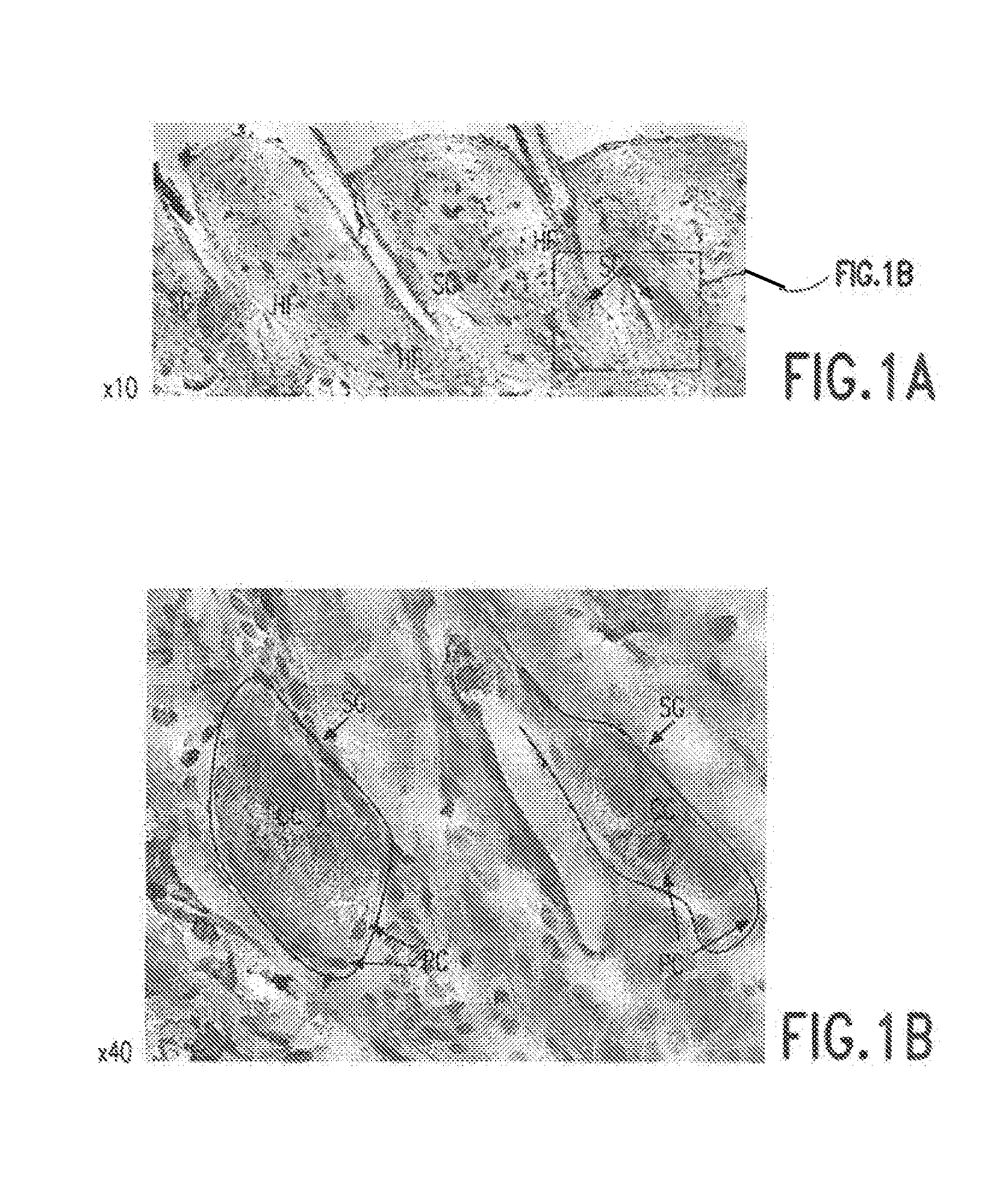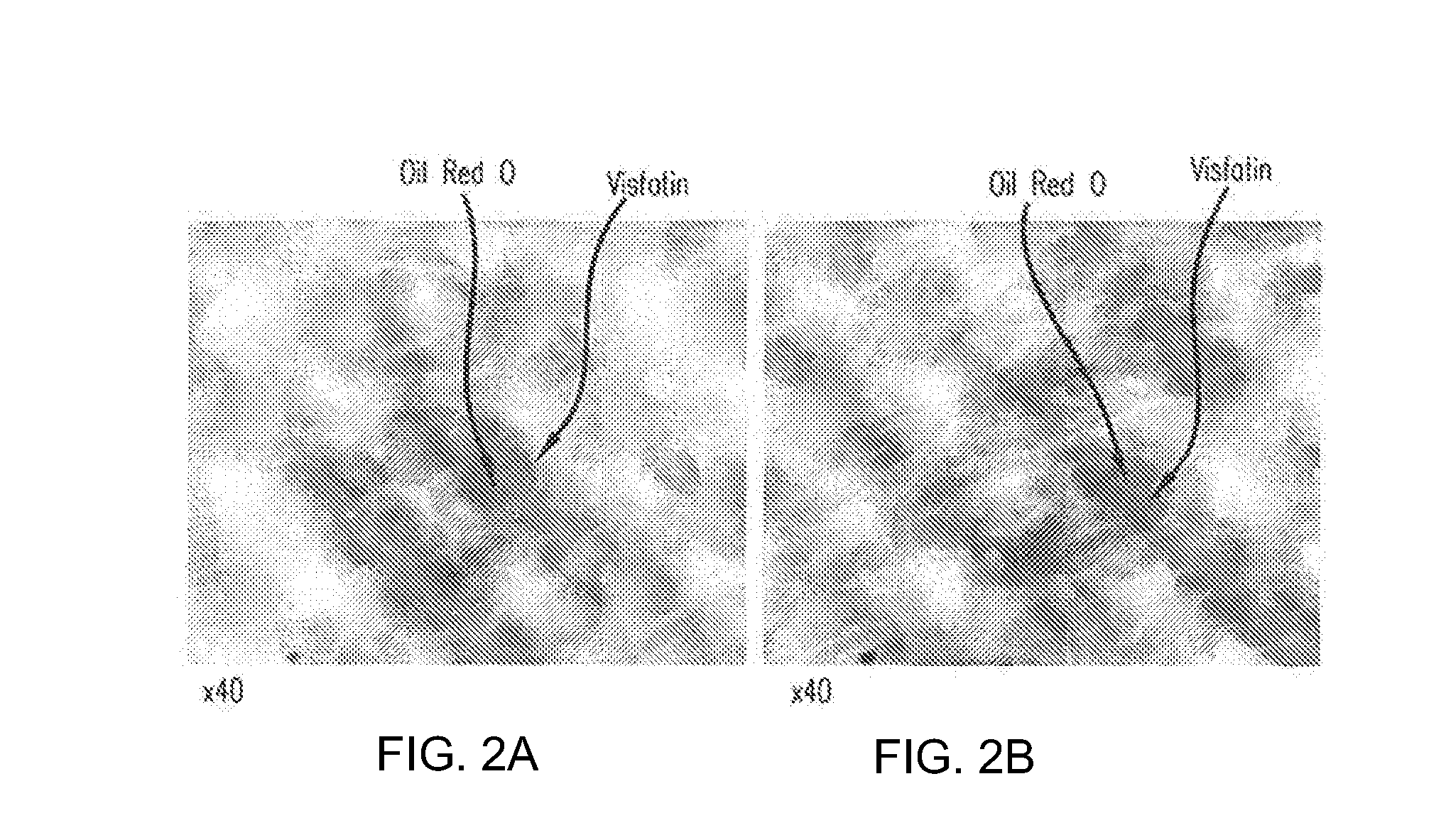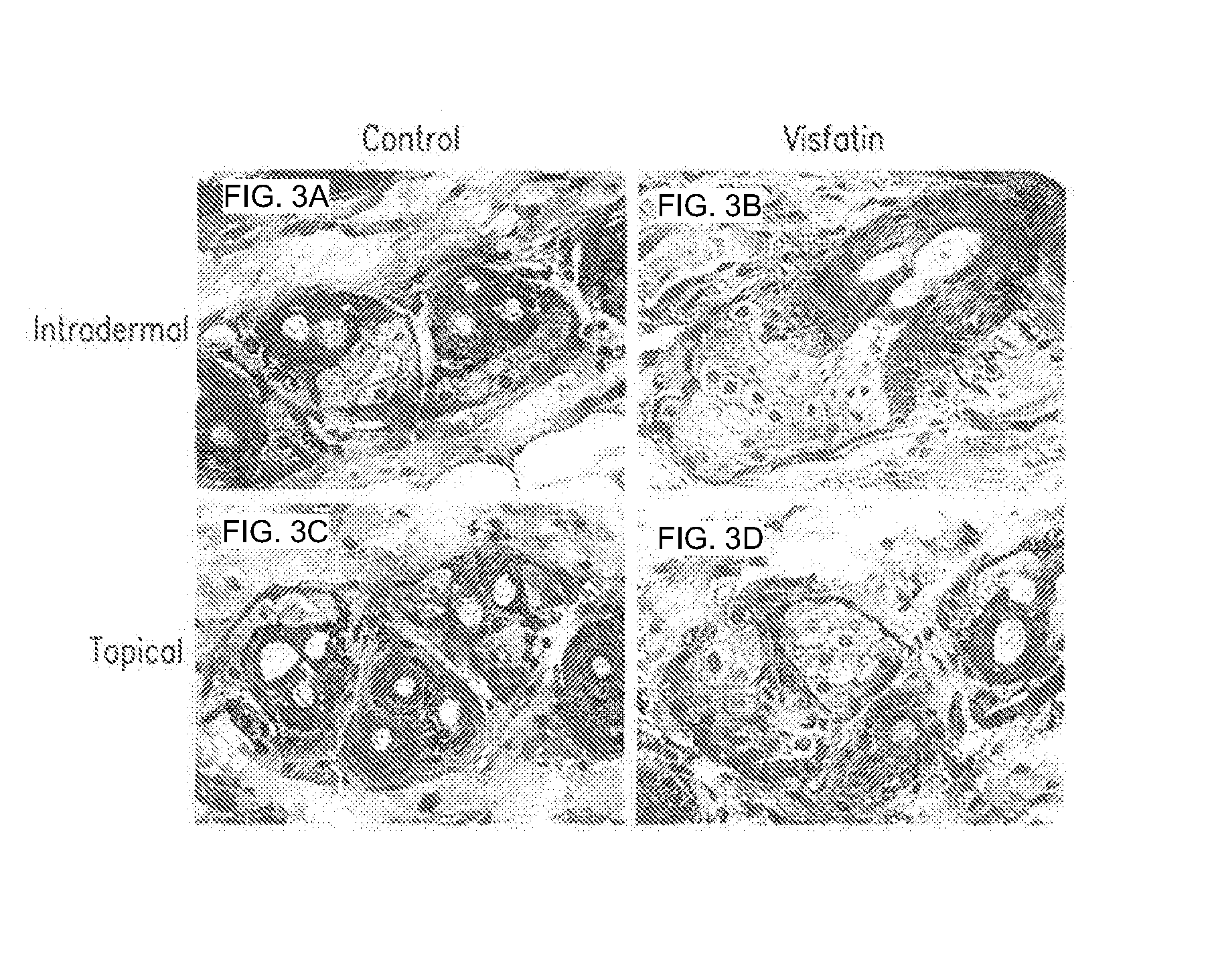Visfatin therapeutic agents for the treatment of acne and other conditions
a technology of acne and therapeutic agents, which is applied in the field of acne and other conditions, can solve the problems of reducing the sebum reducing the sebum production, and increasing the sebum production of the subject, so as to reduce the sebum production and increase the sebum production
- Summary
- Abstract
- Description
- Claims
- Application Information
AI Technical Summary
Benefits of technology
Problems solved by technology
Method used
Image
Examples
example 1
[0148]Visfatin is expressed in the sebaceous glands of the skin. See FIGS. 1A-1B. Visfatin expression in skin was studied using histological examination. Skin biopsy samples from BalbC mice (Mus muscuius) were prepared for histological examination using the materials and methods described above. Visfatin immunohistochemistry was also performed as described above.
[0149]Skin biopsy samples sections were from the skin of 2 month old BalbC mice. Skin samples were fixed in 4% paraformaldehyde and paraffin embedded. Skin sections were specifically stained for visfatin (brown in FIGS. 1A-1B) using an anti-visfatin antibody as described above. In FIGS. 1A-1B“HF” means “hair follicle”, “SG” means “sebaceous gland), “PC” means “peripheral cells” and “CC” means “central cells[.]” Images in FIGS. 1A-1B represent magnifications of 10× or 40× as indicated and were produced using a Nikon Eclipse 50i microscope.
[0150]As seen in FIGS. 1A-1B visfatin is predominantly, and specifically, expressed in t...
example 2
[0151]Visfatin is highly expressed in the sebum accumulating cells present in the interior of the sebum gland. See FIGS. 2A-2B. Skin biopsy samples from BalbC mice were prepared for histological examination using the materials and methods described above. Visfatin immunohistochemistry and Oil Red O staining was also performed as described above.
[0152]Skin biopsy samples sections were from the skin of 2 month old BalbC mice. Skin samples were fixed in 4% paraformaldehyde and paraffin embedded. Skin sections were specifically stained for visfatin (brown in FIGS. 2A-2B) using an anti-visfatin antibody as described above. Skin sections were also stained with Oil Red O to identify accumulations of lipids, such as sebum lipids. Images in FIGS. 2A-2B represent magnifications of 40× as indicated and were produced using a Nikon Eclipse 50i microscope.
[0153]As seen in FIGS. 2A-2B visfatin expression and a large pool of lipids are clearly co-localized within those cells having morphological fe...
example 3
[0154]Topical administration and intradermal administration of visfatin increases the number of sebocytes located inside of the sebaceous glands. See FIGS. 3A-3E.
[0155]A stock preparation of recombinant. Mus musculus visfatin (Enzo Life Sciences Inc., Farmingdale, N.Y., USA) was prepared in 0.1 M ammonium bicarbonate buffer solution. This stock solution was then used to prepare a topical solution comprising 0.01 μg / ml of recombinant. Mm musculus visfatin in PBS. The stock solution was also used to prepare an intradermal solution comprising 0.01 μg / ml of recombinant, Mus musculus visfatin in PBS containing 0.1% (v / v) DMSO. Adult BalbC mice having an average body weight of 25 g then received either 200 μL of the topical solution by topical administration to the skin treatment area and the use of sterile gauze or 200 μL of the intradermal solution by injection into the skin treatment area. Mice were treated in this fashion with the topical solution or intradermal solution delivered onc...
PUM
| Property | Measurement | Unit |
|---|---|---|
| body weight | aaaaa | aaaaa |
| temperature | aaaaa | aaaaa |
| pH | aaaaa | aaaaa |
Abstract
Description
Claims
Application Information
 Login to View More
Login to View More - R&D
- Intellectual Property
- Life Sciences
- Materials
- Tech Scout
- Unparalleled Data Quality
- Higher Quality Content
- 60% Fewer Hallucinations
Browse by: Latest US Patents, China's latest patents, Technical Efficacy Thesaurus, Application Domain, Technology Topic, Popular Technical Reports.
© 2025 PatSnap. All rights reserved.Legal|Privacy policy|Modern Slavery Act Transparency Statement|Sitemap|About US| Contact US: help@patsnap.com



